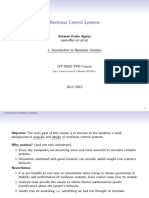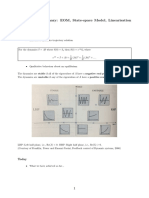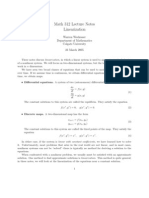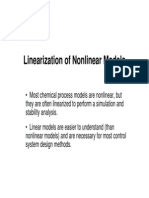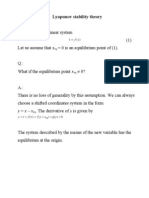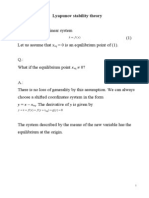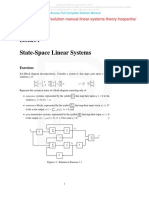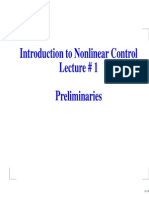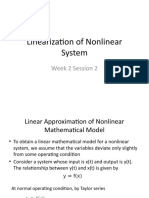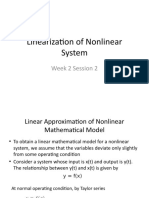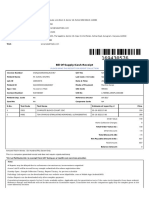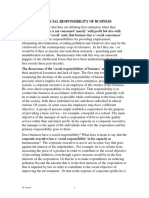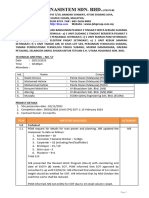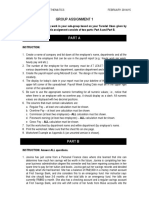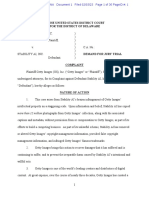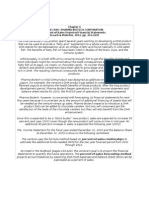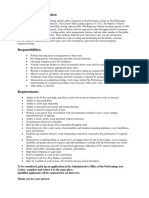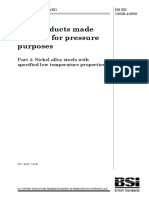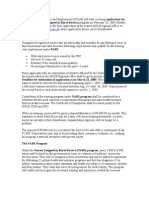100% found this document useful (1 vote)
177 views5 pagesEE250: Lecture Note Nonlinear Systems and Linearization
This document discusses nonlinear systems and their linearization. Nonlinear systems have properties like multiple equilibrium points, limit cycles, and chaos. Linearization approximates a nonlinear system around an equilibrium point using a linear model. It involves taking the Jacobian of the system equations with respect to the state and input variables, evaluated at the equilibrium point. This yields a linearized system that can be analyzed more easily than the original nonlinear system. Examples show finding the equilibrium point and linearizing a first order and a two-dimensional system.
Uploaded by
fghstrhCopyright
© © All Rights Reserved
We take content rights seriously. If you suspect this is your content, claim it here.
Available Formats
Download as PDF, TXT or read online on Scribd
100% found this document useful (1 vote)
177 views5 pagesEE250: Lecture Note Nonlinear Systems and Linearization
This document discusses nonlinear systems and their linearization. Nonlinear systems have properties like multiple equilibrium points, limit cycles, and chaos. Linearization approximates a nonlinear system around an equilibrium point using a linear model. It involves taking the Jacobian of the system equations with respect to the state and input variables, evaluated at the equilibrium point. This yields a linearized system that can be analyzed more easily than the original nonlinear system. Examples show finding the equilibrium point and linearizing a first order and a two-dimensional system.
Uploaded by
fghstrhCopyright
© © All Rights Reserved
We take content rights seriously. If you suspect this is your content, claim it here.
Available Formats
Download as PDF, TXT or read online on Scribd
/ 5







